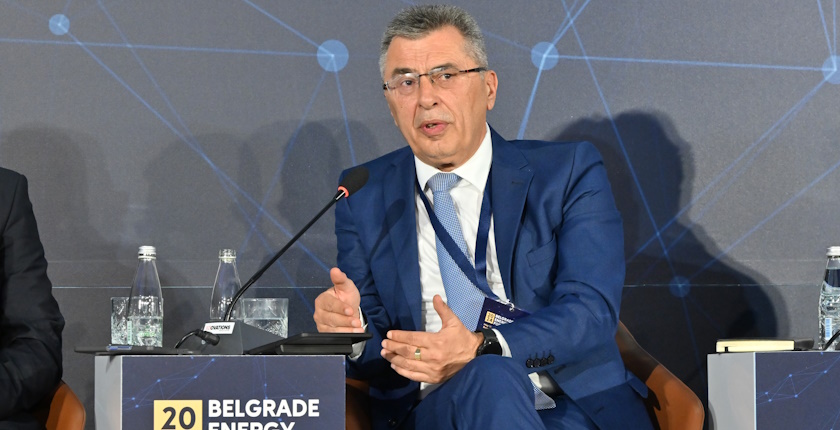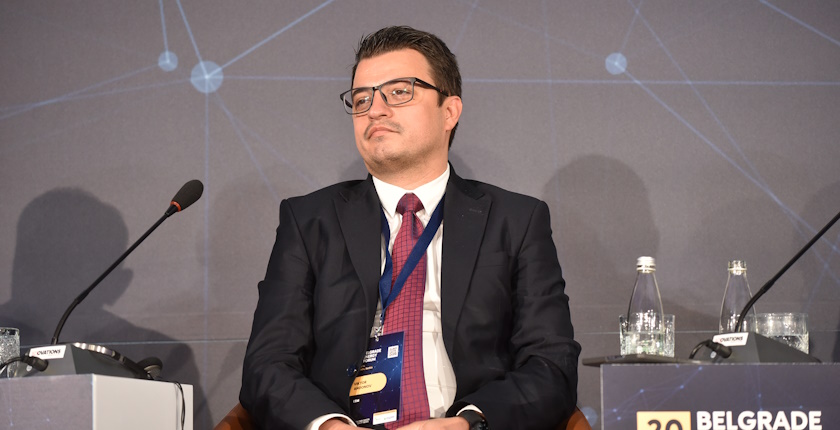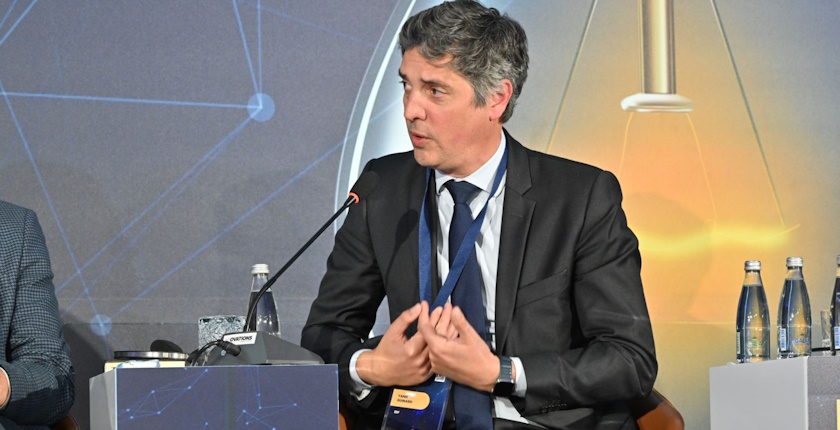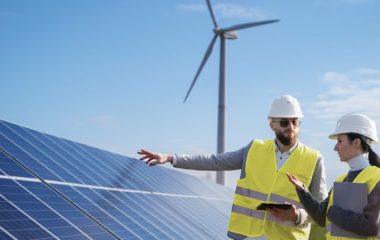
Photo: Balkan Green Energy News
Power utilities in the Western Balkans have ambitious goals for 2050, but they are flexible in mapping the path because the development of technologies can’t be predicted with certainty. These state-owned energy companies are well aware their role will change in the long term and that they need to work on increasing efficiency and transforming how they operate. It is important in order to boost investment capacity, but also to translate the efficiency into the lowest possible yet viable electricity prices.
These are the main takeaways from a panel titled ‘Accelerating transition roadmap of SEE power utilities’, held as part of Belgrade Energy Forum – BEF 2024, which brought together more than 500 participants from 30 countries, including representatives of about 150 companies.
Representatives of three power utilities from the Western Balkans presented investment plans and activities aimed at aligning their portfolios with decarbonization goals, and they highlighted the importance of new technologies for the energy sector transformation.

The discussion was moderated by Mislav Slade-Šilović, Energy, Utilities & Resources Consulting Leader for Southeast Europe at consultancy PwC Croatia.
He asked the panelists what the power utilities’ portfolios could look like in 2050 and then compared their answers with ones provided by artificial intelligence. Their responses included a high penetration of renewables and a decline of traditional energy sources, distributed generation, and distributed energy with batteries in the mix, as well as AI and new technologies. The vision of the power utilities’ top people corresponded quite well with what AI had to say, explained Slade Šilović.
Živković: EPS is preparing for the future with a different production portfolio

Dušan Živković, Acting Director of Serbia’s state power utility Elektroprivreda Srbije (EPS), expressed his belief that EPS should seek to position itself as a modern company with a different portfolio. The company should make the most of the available resources – sun, wind, water – so as to ensure energy security.
“The first batch of equipment for the Kostolac wind farm, EPS’s first wind project, has just arrived, and we have also started construction on the Petka solar power plant. With these projects, along with the planned 1 GW of self-balancing solar power plants and the Bistrica pumped storage hydropower plant, EPS is preparing for the future, for a different production portfolio, for sustainable business, and for ensuring the security of supply,” stated Živković.
Živković: In the last century, we replaced the candle and the fireplace with the light bulb. In this one, we may replace them with solar panels and heat pumps.
EPS top man’s emphasized that it is already clear that the circular economy and AI, along with decarbonization, will be the issues that will have the greatest impact on the future of the energy sector.
“Decarbonization and the replacement of production from fossil fuels are a particular challenge, but these three areas will have a critical impact not only on the energy sector, but on all other areas as well. Also, decentralization in energy production is a reality we’re already facing. If in the last century we replaced the candle and the fireplace with the light bulb, maybe in this century we will replace them with solar panels and heat pumps,” noted Živković.
Đukanović: Energy should be produced where it is consumed

For the past two years, Montenegro’s state power utility, Elektroprivreda Crne Gore (EPCG), has been promoting the production of electricity in places where it is consumed, stressed Milutin Đukanović, President of EPCG’s Board of Directors.
“This policy has proven to be very effective. We have already completed the Solari 3000+ project, with 43.5 MW installed on the roofs of 4,200 prosumers. Our plan is to add a further 60 MW through the Solari 5000+ project, so that in both projects we have a total of about 100 MW,” he said.
According to him, part of EPCG’s business philosophy is to use its hydropower infrastructure for solar power plants. The most important source of electricity in Montenegro is Perućica, a run-of-river power plant, he said. It works well when it rains, but nowadays, it is a great waste to use even a drop of water if the sun is shining, he noted.
Đukanović stressed that planning seven or eight years ahead is very difficult because the development of battery, hydrogen and AI technologies is unpredictable. “Whatever we plan today will turn out inadequate. In the future, much of the industry will likely tend to adopt the produce-where-you-consume principle, and we can only speculate how much battery technology will advance and how much the utilization rate of solar power plants will increase,” he added.
Andonov: Renewables capacity growth has helped reduce electricity imports

Speaking about the vision for 2050 of North Macedonia’s state power utility Elektrani na Severna Makedonia (ESM), Viktor Andonov, Member of Management Board and Director for Development and Investments, expressed his belief that it is possible to build a modern and sustainable energy system. He recalled that in 2019, ESM was the first power utility in the region to adopt a development strategy based on the European Green Deal.
“Out of three scenarios, one was green – that we have no coal in 2030, and with lots of renewables, especially solar power plants. It seemed unrealistic to many at the time, but in five years we have realized one third of the plan when it comes to solar power plants: out of the 1,500 MW targeted for 2040, we already have around 600 MW,” Andonov stated.
The direct effect of this measure was the reduction of imports, he noted. For 10-15 years until 2023, the import of electricity in North Macedonia ranged between 20% and 30% of consumption, and last year it dropped to 2.5%, Andonov noted. These investments, whether by the state or the private sector, have yielded good results, he stressed. ESM has a slightly lower market share than EPS or EPCG, and the part of industry that buys electricity from other suppliers has turned to domestic sources, instead of imports.
Guinard: EDF can bring added value to complex projects in Western Balkans

French power utility EDF, a global company that operates in almost 30 countries, has decarbonized most of its energy mix, with low-carbon sources now making up 93% of it. EDF generates nearly 480 TWh per year, and its goal is to decarbonize power production by 2050, according to Yann Guinard, Vice-President for Central and Eastern Europe, within EDF’s International Division.
EDF aims to be a global leader in low-carbon energy, at sustainable prices, not only when it comes to electricity, but also other forms of energy, according to him. EDF wants to promote the transition from fossil fuels to renewable and other low-carbon sources in electricity generation, as well as increased energy efficiency. It also aims to play a leading role in supporting the mass deployment of renewables in power systems, he stated.
When it comes to Southeast Europe, Guinard says the French company believes it can bring added value on complex projects of building large and medium-size hydropower plants, as well as in their rehabilitation and the introduction of new technologies. These include nuclear technology, which provides baseload energy with low emissions and can support the development of renewables, he explained.
Zieliński: Supporting a faster pace of investments in renewables and grids

Grzegorz Zieliński, Head of Energy for Europe at the European Bank for Reconstruction and Development (EBRD), said that the global goal of achieving carbon neutrality by 2050 should be viewed from a green perspective. This involves the development of renewables, but also digitalization, which represents a major opportunity, and an inclusive energy transition process, which should ensure that no one is left behind, according to him.
The EBRD’s strategy is based on speeding up the transition to renewables and investing in grids to help overcome the challenge of intermittency, explained Zieliński. This region has great natural potential for hydropower, a very important element of energy systems, especially when it comes to balancing intermittent energy sources, he noted. Managing variable production from renewable sources should not be done exclusively at the level of transmission and distribution system operators, but also as close as possible to the place of production, he said, adding that this is why the EBRD promotes energy storage solutions not only in companies, but also in households.
When asked whether the EBRD might help finance nuclear energy projects, he said that the lender’s latest energy sector strategy, adopted in December, does not allow funding new nuclear projects.
However, the strategy clearly states that the EBRD will monitor the development of small modular reactor technology and, once it becomes commercially viable, might provide opportunities for private sector investments in nuclear energy, according to Zieliński.


















Be the first one to comment on this article.